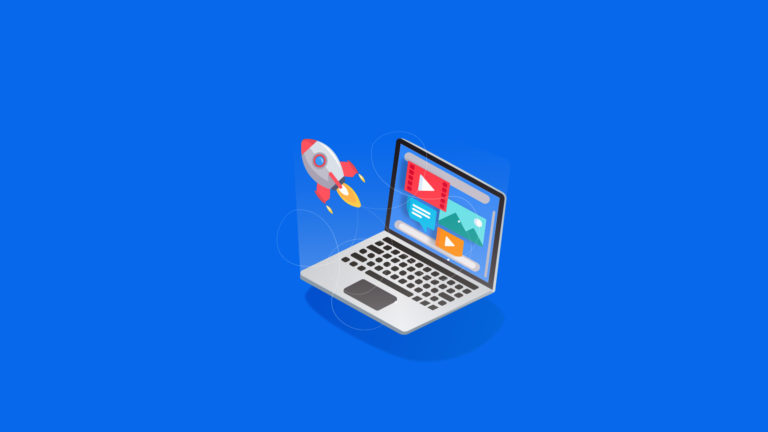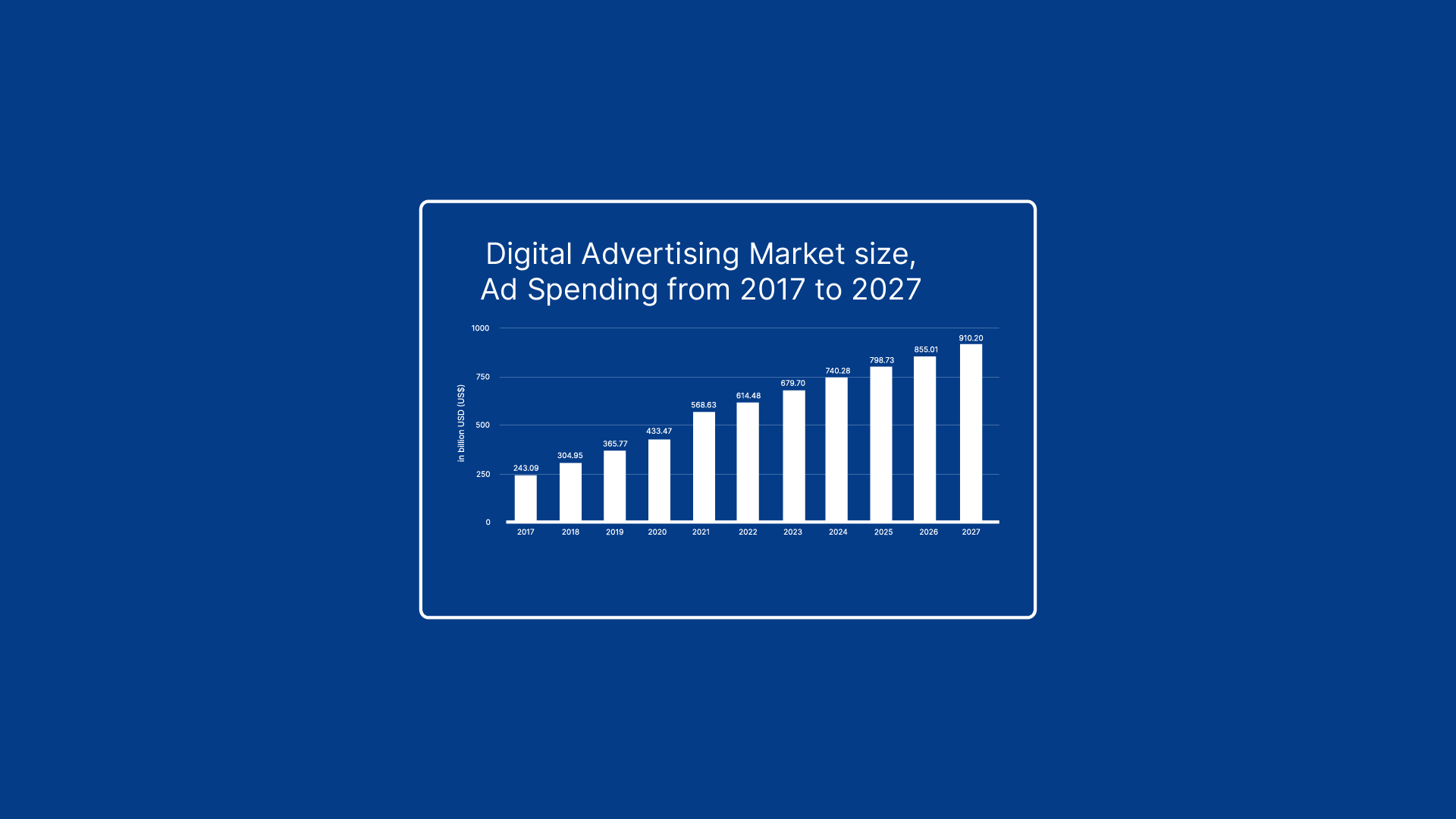|
Getting your Trinity Audio player ready...
|
The world of digital marketing is changing rapidly. As consumers become increasingly comfortable with technology, businesses are forced to adapt and change along with it. Digital marketing is becoming more important than traditional forms of advertising such as TV, radio, print, and billboards.
If you’re looking for ways to develop a digital marketing strategy, where do you begin? It’s still a challenge because many businesses know how important digital and mobile channels are now for attracting and keeping customers.
However, these businesses don’t have an integrated strategy for supporting digital transformations and growing their businesses. And they’re not engaging their audiences effectively online.
If your business doesn’t have a strategic digital marketing strategy aligned with your business plan, you will likely face the 10 issues I discuss below and you will lose out against your competition who are better at digital marketing than you are.
Also with the reasons why you should invest in a digital strategy, I will recommend solutions and next actions to help you optimize your strategy in 2023.
Why is Digital Marketing Important Today?
Countries are recording record-high inflation rates reaching up to 9.1% in the US. This inflation impact causes some issues for businesses as their costs grow and growth slows down. Digital marketing is more important than it’s ever been because of inflationary pressures. As consumers become increasingly aware of price increases, they are looking for ways to save money. This includes spending less on advertising.
The reason why digital marketing is becoming more important is because it allows businesses to reach customers where they spend most of their time – on social media. This gives companies access to a huge audience one that is growing every day.
As a result, if you don’t use digital marketing, you could lose out on potential sales. You need to make sure that your digital marketing strategy is adaptable to changing trends and conditions. Otherwise, you risk losing out on growth opportunities.
You also need to track your digital marketing performance to ensure that it’s working effectively for your business.
How Does Digital Marketing Differ for B2B and B2C Marketing?
Marketing strategies are different for B2B and consumer brands. While both require a solid understanding of customers, there are key differences in how each market segment approaches advertising.
One major difference is that while B2C marketers focus on building awareness and increasing demand for products and services, B2B companies must build trust and credibility. This requires a deeper understanding of the buyer persona and the overall customer experience.
When creating a digital strategy for a B2B company, it’s important to think about the entire customer journey. What do you want buyers to do once they find your product online? How do you help them understand what you offer? Do you provide educational resources or case studies? Are you looking to generate leads or sell directly to clients? These questions will help guide the creation of your digital strategy.
Another key component of a successful digital strategy is integrating offline activities into the mix. For example, if you’re selling software, don’t just advertise online; include ads on billboards, radio stations, and TV channels. If you’re selling hardware, make sure to attend trade events like CES, Mobile World Congress, and IFA.
The final piece of the puzzle is developing a strong marketing automation program. Once you know where your audience spends most of their time online, you can start automating some of your campaigns. You could send emails, text messages, or even push notifications based on actions taken by prospects.
Steps to Fully Optimizing Your Digital Strategy
Digital plans should be created separately from other marketing activities. A good digital plan needs to include all channels, not only online.
Marketing is about creating value for customers. Your digital marketing plan should align with your overall marketing strategy, and it should help you understand how to best reach your target audience.
Digital marketing strategies should include things like social media, email, mobile apps, and paid advertising. These are some examples of ways you can use digital marketing to generate leads and increase sales.
A separate digital marketing strategy is developed first. It’s useful to show the opportunities and problems before starting the project. You can start mapping out a plan by defining goals and specific strategies for online marketing at this stage.
Secondly, digital becomes an integral part of marketing strategy, it’s business as usual. However, it doesn’t require separate planning, except for some tactical decisions. At this point, your integrated omnichannel strategy will be the most effective for driving sales.
Why you May Need a Digital Marketing Strategy?
Digital Marketing Strategy is an investment you need to make sure you understand what it is and how it works. The internet has changed everything about how people do business. If you’re still operating without a digital marketing strategy, it’s time to wake up and smell the coffee. You simply cannot afford to ignore digital marketing; it’s too important to your business.
In fact, according to Forrester Research, “by 2020, over 50% of US consumers will use mobile devices exclusively to access the web.” And, according to Gartner, “digital technologies are becoming ever more central to businesses’ success, and digital marketing is one of the fastest growing areas of expertise among B2C marketers.”
So, what does this mean for your business? Well, if you’re not investing in digital marketing today, you’re missing out on opportunities to increase customer loyalty, improve brand awareness, and drive sales. In short, you’ll lose market share to competitors who are already investing heavily in digital marketing.
And, let’s face it – there’s no way you could know whether you need a digital marketing strategy unless you ask yourself some questions. We’ve identified ten key challenges that many companies face, and we’ve come up with a list of recommendations to help you solve each problem.
1. You don’t know the next step in your marketing
Many companies lack a clear strategic vision for their online presence.
If you don’t set specific, measurable, attainable, relevant, and time-bound (SMART) digital marketing goals for yourself, you probably aren’t putting enough resources into reaching them and you may not be evaluating whether you’re meeting those goals.
If you’ve ever worked in marketing, you know there are lots of ways to do things wrong. And I’m not talking about the obvious ones — like not having a clear strategy, failing to measure what matters, or making uneducated decisions based on gut instinct.
These mistakes are easy to spot once you understand where they come from. But many others are less obvious, and even harder to pinpoint.
Here are some common traps that marketers fall into, and how to avoid them.
Marketing is often thought of as one big funnel. Your job is to make sure people start down the funnel and end up buying something. But the reality is that most products don’t sell themselves. Most companies spend months or years building awareness, nurturing leads, and converting prospects into customers.
This process requires understanding your audience, and figuring out how best to reach them. If you don’t know your audience, you won’t know what works, and you’ll never be able to build a solid foundation for future growth.
Don’t just focus on your returns
There’s nothing wrong with focusing on profits and ROI. Those are essential parts of any successful marketing plan. But sometimes we forget that marketing isn’t just about money. We want to make our clients happy, keep them loyal, and help them grow.
Marketing is about creating value for everyone involved — including ourselves. When we forget that, we lose sight of why we’re doing what we’re doing.
More is not always better
Remember more is not always better. The problem with thinking that “more” equals “better,” is that it makes us lazy. Instead of taking the time to think about what we’re doing, we just try to add more stuff, hoping that eventually, it will turn into success. But adding more doesn’t mean better.
More often than not, it just means more work. So instead of trying to do everything yourself, delegate tasks to someone else. Let them take care of the grunt work while you concentrate on the important stuff.
2. You won’t know your online audience or market share without a digital strategy
When it comes to marketing, there are many things to consider. From developing a strategy to choosing the best platforms to reach your target audience, marketers face a lot of decisions. But one thing that often gets overlooked is understanding your customer base. This is especially true when it comes to ecommerce businesses.
The problem is that most companies don’t understand who their customers are and why they choose to buy from them. They assume that because they sell products online, everyone wants to shop with them. In reality, this isn’t always the case.
To better understand your audience, you need to look beyond just demographics and focus on behavior. For example, let’s say you run a clothing store. If you want to increase sales, you might think about targeting women ages 25–34. However, if you dig deeper into your analytics, you might find out that men ages 35–44 make up the majority of your traffic.
This information could help you decide whether to invest in advertising for those younger shoppers or focus your efforts on reaching older male consumers. Of course, you could also use this knowledge to develop targeted offers like discounts and free shipping for customers over age 45.
Another way to gain insight into your audience is to conduct competitor research. By analyzing what your competitors are doing, you can learn a lot about your brand.
- Are they focusing on specific audiences?
- How do they communicate with their customers?
- What types of promotions do they offer?
- And what does their social media presence reveal about their overall strategies?
In addition to gaining insights into your competition, competitor research can also give you some ideas about how to build your own brand identity. After all, no matter how much money you spend on ads, if nobody knows who you are, you aren’t making a difference. So start by looking at your competitors and see what they’re doing.
Finally, once you have a good idea of who your customers are and what makes them tick, you can begin designing effective digital campaigns. To start, you need to determine what type of campaign will work best for your business.
3. Your competitors will gain market share over you
If you aren’t dedicating enough time and effort to digital marketing, or if you’re just winging it without any clear strategy, then your competition will eat your digital lunch for sure!
Always-On Media refers to the investments in both owned and owned media needed across the customer life cycle. They’re needed to keep your site visible and supported so that visitors continue to convert and stay engaged.
In today’s digital world, it’s hard to ignore the importance of always-on marketing. In fact, according to Forrester Research, marketers spend about $1 billion annually on this type of advertising. But what exactly does it mean? And how do you know if you’ve got enough budget allocated to always-on marketing?
Here are three ways to tell whether your always-on marketing efforts are working.
1. You’ll see growth in your customer base. If you’ve invested in always-on marketing, you’ll likely see increased traffic and revenue coming from existing customers. This could include things like a greater number of leads, sales opportunities, and conversions.
2. You’ll notice a shift in your competition. When you invest in always-on marketing campaigns, you’ll find yourself competing against companies that are doing the same thing. So, if you notice your competitors starting to outpace you in terms of customer acquisition, you might want to take a closer look at your always-on marketing strategies.
3. You’ll start seeing more data points. As mentioned above, every channel you use for always-on marketing is another opportunity to collect data. By collecting data across different sources, you can better understand where your audience spends their time online. This data can help inform future decisions around your always-on marketing campaign.
4. You don’t have a powerful online value proposition
The most important thing about your brand is how well you communicate your value proposition. If you’re struggling to define your digital value proposition, here are four things you should consider:
When defining the scope of your digital marketing, it’s important to consider how digital experiences can improve brand appeal. This includes improving online services, interactive tooling, and digital audience engagements to improve customer experience.
With a clearly defined digital value proposition, tailored to your different target persona types, you will be able to differentiate your product or service encouraging existing and new audiences to interact with you initially and keep engaged.
5. You don’t know your online customers well enough
The internet is full of people saying things like “digital is the most measurable medium ever.” But it’s very hard to measure how much impact digital marketing has had on your bottom line. And there are many reasons why.
For example, it’s often said that digital media is the “most measurable” medium because we can count every single impression. But Google Analytics tells us nothing about whether a visitor came into our site via mobile, social media, email, or even one of our competitors. We just see numbers. And those numbers don’t necessarily mean anything.
Google Analytics doesn’t tell us whether someone visited our site because they liked our brand or product. Nor does it tell us whether they found us organically or paid for a link. There are lots of ways to find out, but Google Analytics won’t show you any of them. So we have no idea whether our efforts are working.
But while digital analytics provide insights into visitor behavior, they won’t tell you anything about customer satisfaction or loyalty. To truly understand your audience, you’ll need to look beyond statistics and start asking questions like: What does my audience want? How do I engage with them? And what are they saying to me? This is where qualitative research comes in.
Qualitative research is just as important as quantitative research – and sometimes more so. Qualitative research involves talking directly to your audience, rather than relying on data collected from surveys and questionnaires. By listening to what customers say, you can gain invaluable insight into how they feel, what motivates them, and what makes them happy.
6. Your marketing is not integrated
Digital marketing is often seen as a standalone discipline. In reality, it’s embedded within the wider context of the organization, including the broader communications mix, customer experience, product development, sales, and operations.
Digital strategies are no longer a nice-to-have extra; they’re critical to the success of your business. And yet many businesses still operate in silos, with one person managing the digital side of things while another handles the rest of the business. This approach isn’t working.
With an integrated approach to marketing, digital marketing becomes part of your marketing activity, and part of business as normal. Your digital team doesn’t go away but rather becomes part of the broader organizational structure. They’ll work alongside your marketing team, helping to develop campaigns across multiple platforms, and ensuring that both sides work together seamlessly.
Digital marketing should be integrated with traditional media like TV advertising, print advertising, radio advertising, etc. This creates a more holistic experience for customers and increases conversions.
Integrating digital marketing into other types of communications such as TV advertising, print ads, and radio ads improves the overall effectiveness of each channel. Customers see the same ad everywhere, so it becomes less memorable. If you integrate digital marketing into other channels, however, it becomes more memorable because it appears in several places.
7. You have not allocated much importance or people to digital marketing
There won’t be enough resources dedicated to both marketing and execution. It may be difficult for an organization to develop specialized e-marketing expertise because there may not be enough specialists available who possess these specializations.
8. You’re wasting money and time through duplication
Duplication happens when marketers buy several different marketing tools without understanding what each one does. They end up spending lots of money and time trying to figure out how to use the same tools in different ways.
A good marketing strategy will help avoid duplication by planning and monitoring all your marketing activities. Marketing automation is an essential component of any marketing strategy. It helps you automate repetitive tasks like email campaigns and social media posts.
Even if you have enough resources, they might not be used effectively. It’s especially true when you’re working at large organizations where you may be seeing different parts of the company purchase different software or use different agencies for doing similar online tasks.
That’s why you need to invest in a marketing strategy that works for you and your team, to plan, manage, and optimize your digital channels and platforms. Drive the marketing results you need to achieve your business objectives and boost your marketing ROI.
9. You’re not agile enough to catch up or stay ahead
Brands like Amazon and Booking are constantly innovating to keep growing their audiences. They do this by creating unique experiences for their customers, and by being able to adapt quickly to changes in customer behavior. This requires brands to be agile, meaning they must be flexible and nimble.
Your brand needs to be agile too. If it isn’t, it risks becoming irrelevant. And that’s no good for anyone. So how does agility work? Agility is about adapting to change. There are three key ways you can become more agile:
- Be open to feedback
- Learn fast
- Experiment
You can’t just copy what others are already doing. Instead, you need to innovate. But you don’t want to reinvent the wheel either. Instead, you need a strategy to identify where your competitors are making mistakes. Then you need to find a way to differentiate yourself. To do this, you need to experiment.
But experimentation doesn’t mean throwing money at things without thinking. Instead, you need clear goals, metrics to measure success, and data to inform decisions. Once you have those, you can start experimenting.
10. You’re not optimizing
Analytics are an important part of every digital marketing campaign. They help you understand what works and doesn’t work for your audience. However many marketers don’t use analytics properly, leading to poor performance.
Once your digital channel has enabled you to get the basic elements right, then you can move on to continuous improvements in key areas like branding, user experience, and leads.
Create your Digital Strategy for 2023
It will be a rough year financially for customers. It seems that we’re now seeing an official economic recession in the United States and globally.
It’s a dangerous place for marketers. They need to rationalize and decide which programs they want to retain for 2023 and which ones they want to cut. CMOs and small business owners should expect layoffs in their companies’ advertising departments within the next year.
As a CMO, you shouldn’t add staff members who you cannot retain. You should instead look into outsourcing. This will allow you to survive and retain your jobs.
As for all these future hard economic conditions, you may be wondering what that important magic tool might be to create a new digital marketing strategy. Well, there are plenty of tools you can rely on. The most complete will be SEMRush.
SEMrush is a powerful SEO software that helps you to analyze keywords, backlinks, traffic, competition, CPC, PPC, social signals, etc. It also provides you with detailed reports on your website and offers a variety of other features.
The best thing about SEMrush is its ability to provide you with real-time insights. You can see exactly what is happening in your niche right now.
The platform allows you to track everything from search volume to organic traffic. You can even compare competitor websites to see what they are up to.
This is a very useful tool if you want to know what people are searching for online.
If you want to learn more about SEMrush, check out our review here.







